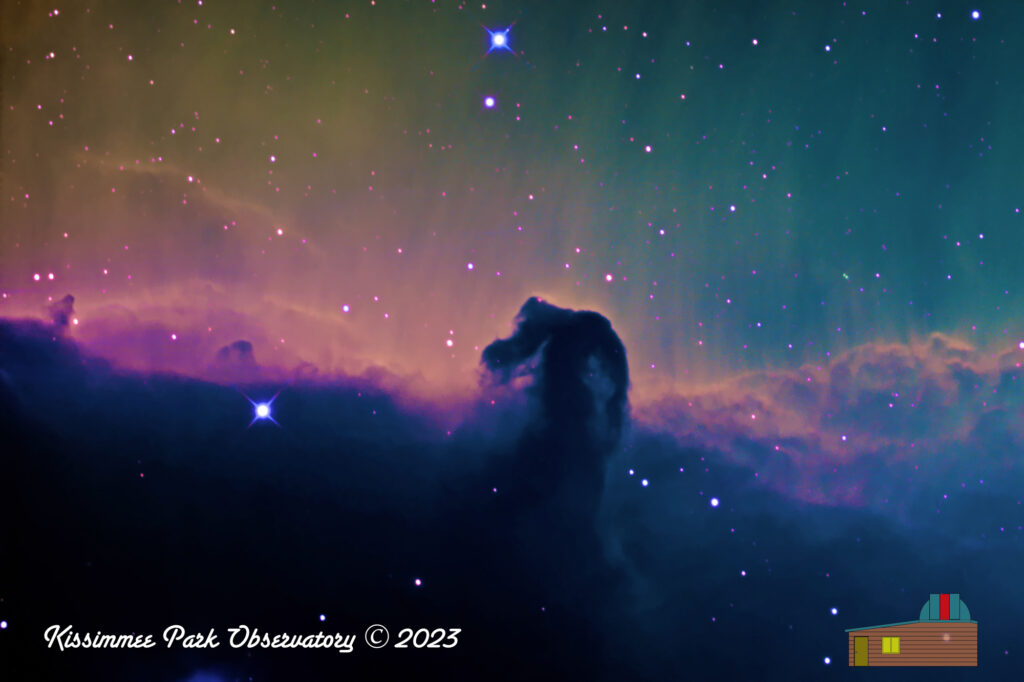The Horsehead Nebula, also known as Barnard 33, is a dark nebula located just below the bright star Alnitak in the “belt” of the constellation Orion, lying 1,375 light years away. This stunning celestial object is a favorite among astronomers and stargazers alike, not only for its unique shape but also for the fascinating processes that are at play within it.
The Horsehead Nebula gets its name from its unmistakable shape, which resembles the head of a horse when viewed from Earth. This distinctive silhouette is created by a dense cloud of dark dust that is being illuminated from behind by the glowing emission nebula IC 434. This large nebula extends from Alnitak and the Flame Nebula, downwards for about a full degree. The contrast between the dark nebula and the background glowing gas clouds makes for a truly breathtaking sight.
The Horsehead Nebula is a prime example of a dark nebula, which are clouds of gas and dust that are so thick and opaque that they obscure the light from the stars behind them. Dark nebulae are often the birthplaces of new stars, as the gravitational forces within these clouds cause the gas and dust to clump together and eventually form into new stellar objects. In the case of the Horsehead Nebula, the process of star formation is ongoing, and there are several young stars embedded within the cloud.
The Horsehead Nebula is also a site of intense astronomical research, as scientists are eager to learn more about the processes of star formation and the structure of these dense molecular clouds. By studying the Horsehead Nebula, astronomers hope to gain a better understanding of how stars are born and the role that dark nebulae play in the evolution of galaxies.
For amateur astronomers and stargazers, the Horsehead Nebula is a challenge target for observation. While it is not visible to the naked eye, it can be seen with a large telescope with an H-Beta filter, under dark skies. Its distinctive shape and the intricate details within the cloud make it a favorite among those who enjoy exploring the wonders of the night sky.
Click on the image to view a larger version.
Image Info
- Imaged from the Kissimmee Park Observatory, in Saint Cloud, Florida
- Camera : ZWO ASI2600MM Pro
- Scope: Orion RC-12 Ritchey-Chretien Astrograph, 2450mm fl, F/8
- Mount: iOptron CEM-120
- Hydrogen Alpha: 24 subframes of 300s = 120 min integration
- Oxygen III: 24 subframes of 300s = 120 min integration
- Sulphur II: 23 subframes of 300s = 115 min integration
- Total integration time: 280 min = 5.9 hours.
- Captured via ASIAir Pro automation
- Optical tracking via ASIAir automation via the ASI174mm Pro guide camera
- Separate channels stacked and SHO4 integrated in Astro Pixel Processor
- Image run through Super DeNoising
- Final processing in Aperture

